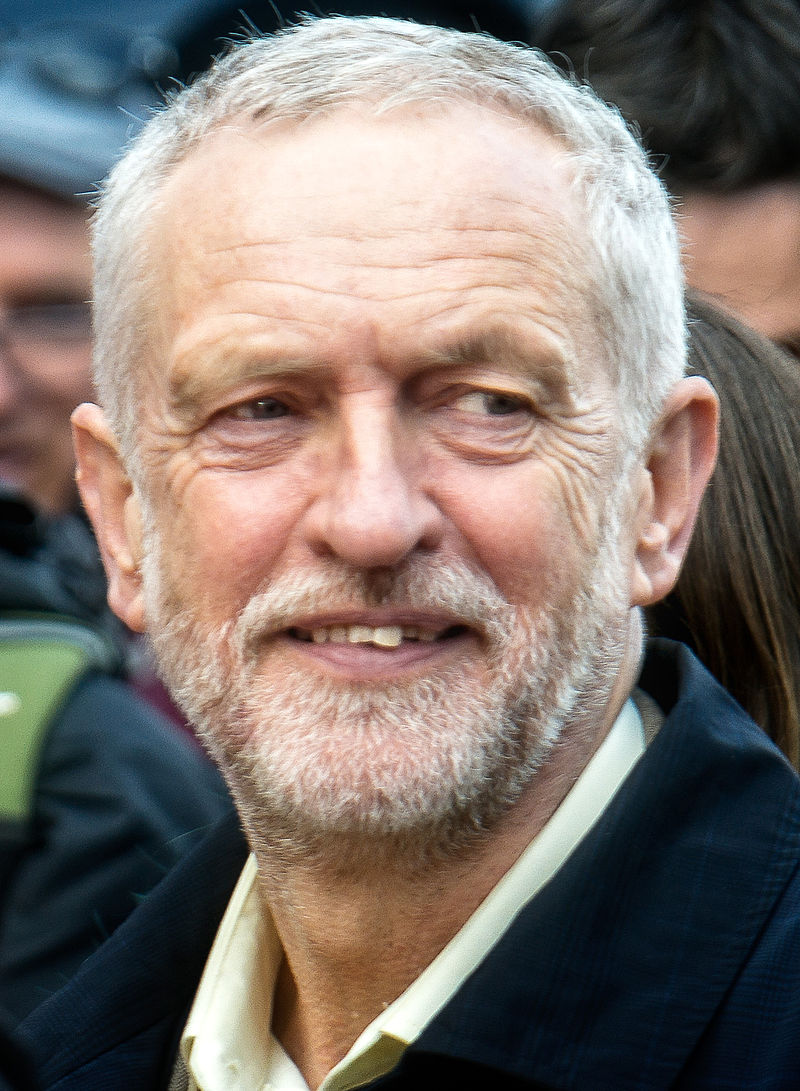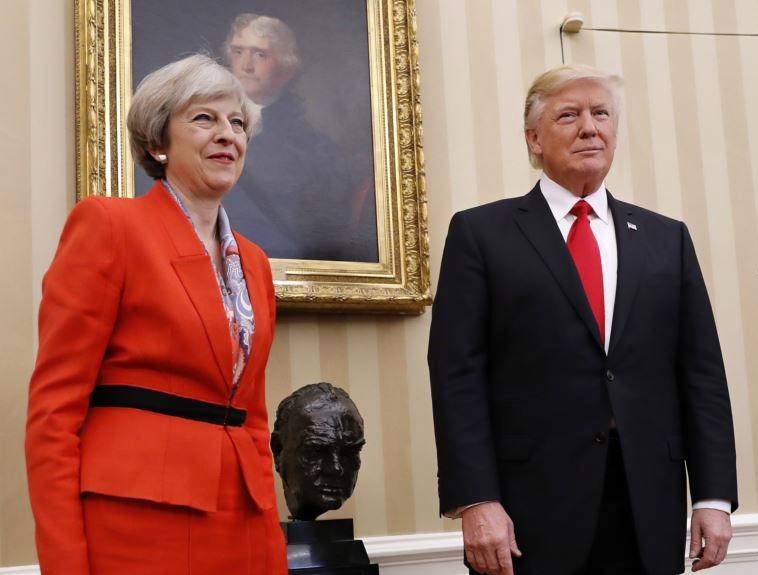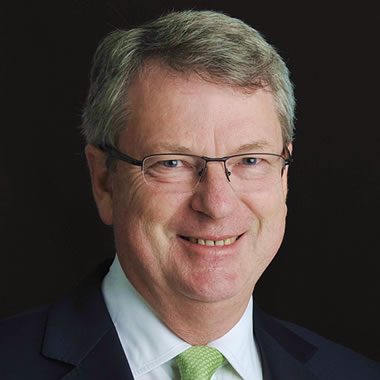Labour vs Tories and back-stabbers
By Scott McDonald
The Labour Party led by Jeremy Corbyn promises a different Britain, for the many not the few. A Labour government that would: nationalise the railways; end NHS privatisation; build council houses again; end zero hours contracts and end Britain’s support for wars of aggression.
The Tories strategy for the election is based on the slogan of: “Vote for Theresa May for a strong and stable government.” This is posed against an allegedly weak Jeremy Corbyn and a divided Labour Party. The Tory dominated mainstream media has parroted this mantra.
Theresa May has refused to take part in televised debates. She claims she wants to talk directly to the public but only appears in front of Tory supporting audiences, waving placards about voting for a strong and stable government. She has been accused of merely delivering “robotic soundbites” and even her erstwhile cabinet colleague, George Osborne, on his first day as editor of the Evening Standard, criticised this approach in a lead article, which said, “There’s nothing wrong with repeating election campaign slogans; the problem comes when the election campaign amounts to no more than a slogan”.
Jeremy Corbyn has been vilified by the mainstream media, and the majority of the right-wing Parliamentary Labour Party, since he entered the leadership race of the Labour Party. It has continued throughout the last two years, in the course of which he has won two leadership elections, built the Labour Party into the largest party in Britain and developed policies in favour of the many not the few. To do this, and survive, he has shown remarkable strength and resilience, contrary to the view of him projected by the media.
Theresa May, learning the lesson of Gordon Brown’s dithering over calling an election, did a U-turn and called a snap General Election, and since then the mainstream media have been united in their presentation that the Tories will win overwhelmingly. The polls, many commissioned by the media, have been used to justify this assertion. The recent local elections will encourage the media to continue to repeat that the Tories will win the General Election by a landslide.
The Tories believe that they only have the election to lose. Hence the refusal to take part in televised debates with Jeremy Corbyn. Under pressure May has agreed to appear on the BBC TV’s Question Time but still refuses to debate with Corbyn.The Tories’ austerity policies and the damage done to working people and their communities would be exposed in a debate with Corbyn speaking for the many not the few.
Brexit
The concentration by the Tories on the Brexit issue and May’s spats with EU leaders plays into their tactic of taking votes from UKIP and emphasising their contention that they will stand up to the EU in the negotiations. The local election results in England reflect the success of this tactic.
UKIP lost all their existing 142 council seats with the bulk of their votes going to the Tories.
In Scotland, the Tory tactic since the referendum on Scottish independence in 2014, and especially since the UK General Election of 2015 has been to portray themselves as the main opponents of independence and in opposition to a second referendum.
Presenting themselves as the party most implacably opposed to Scottish independence has paid off. Thus, the Tories became the second largest party in the Scottish Parliamentary election of 2016, pushing Labour into third place. In the recent Scottish local elections the Tories made significant gains whilst Labour’s share of the vote continued to fall and many council seats were lost.
Tory Strategy
The Tories have re-engaged Lynton Crosby as their campaign strategist after their success in the 2015 election. Previously he guided John Howard and the Liberal Party (ie the Australian Tory Party) to four election wins in Australia and Boris Johnson’s two successful Mayoral campaigns.
All parties understand that there is an air war (TV, radio, social media) and a ground war (knocking on doors, phone calls, leafletting). Mark Wallace, writing in the Conservative Home website, said of the 2015 election, “The Conservative air war was visible for anyone to follow – the assault on Labour’s fiscal credibility, the image of a weak Ed Miliband being propped up by a strong SNP, the starkly drawn dividing lines on such issues as welfare reform and the deficit.” [i]
However, the Tory ground war was deliberately played under the radar. Wallace continued, “At the Conservative conference in Birmingham in 2012, Stephen Gilbert, the Prime Minister’s Political Secretary, outlined the election strategy… “Speaking in a closed session to senior activists set out the programme for the Tory Stealth Win that was painstakingly effected beneath the radar of Labour, the media – and indeed pollsters.”
It was known as the 40/40 strategy in which the campaign would focus on defending 40 Conservative-held seats and attacking 40 others held by Labour and the Liberal Democrats.
Wallace added, “Having picked the seats and selected the candidates, the next step was to understand key voters in each constituency. Part of Lynton Crosby’s role was to lead on the polling and analysis in each target constituency; how had they voted in the past, why had they done so, what might make them stick with the blues or switch, and so on. He believed there were more potential swing voters than people realised and, in particular, that Liberal Democrat supporters were more amenable to voting Tory than others realised.
“This laid the foundation for the ground war: without it, the ground campaigning, phone calls and leaflets would have been far less effective. If the concept of the 40/40strategy was a precision strike to win a majority, Crosby’s research (later bolstered by Jim Messina’s [ii] data) was aimed at delivering a precision strike to win a majority in each seat.
“The majority would be won by campaigns targeted directly at a relatively small number of groups, each composed of a relatively small number of people in a relatively small number of small seats.
“The Conservative approach was, in effect, a rather secret war, carried out below the radar of the watching national media…”
The Tories 40/40 strategy was executed using Team 2015, who were activists moved around to the target seats. They were encouraged by assistance with transport, special days and free curries and enabled with a very clear picture of voter’s likes/dislikes provided by the database created by Crosby and his team.”
Rigged Election in 2015?
Some 14 police forces sent files to the Crown Prosecution Service (CPS), referring more than 30 Tory MPs and officials for alleged offences of over-spending in the 2015 General Election campaign.
These allegations highlighted by Channel 4 News and the Daily Mail - of busloads of Conservative activists sent to key seats, whose expenses were reported as part of national campaign spend rather than falling within the lower constituency limits. The bus loads were Lynton Crosby’s Team 15.
The CPS reported that, “Although there is evidence to suggest the returns may have been inaccurate, there is insufficient evidence to prove to the criminal standard that any candidate or agent was dishonest.” The CPS is continuing to investigate the Tories’ National Treasurer.
The Tories have already been fined £70,000 by the Electoral Commission in March of this year for wrongly reporting national spending on election campaigns at three by-elections in 2014 and the 2015 UK General Election. Presumably the Tories have adopted the same Lynton Crosby tactic again in the 2017 election and are prepared to take the hit.
Use of Nationalism
In the 2015 General Election the underground ground war was complemented by the very visible air war, of which the use of nationalism was particularly effective in the targeted areas. The Tories used the SNP to portray a situation in which, if Labour won, Miliband would be in the pocket of Salmond, the SNP leader at the time. It was a very effective tactic devised by Tory campaign strategist, Lynton Crosby.
“With typical shrewdness and ruthlessness, Crosby identified the surge of Scottish nationalism in recent years as a wedge that could be used against Labour, both in England and Scotland.” (Andy Beckett, Guardian, 8 May 2015)
“The Tory emphasis on the threat of a SNP-Labour coalition helped claw back voters from the Lib Dems and UKIP – placing the Conservatives on course to claiming today’s majority.” (Corey Charlton, Mail online, 8 May 2015)
Nationalism is being used again in the 2017 General Election. The Tories grasped Brexit and are using the spats with Juncker and the EU leadership to wind up English (and British) nationalism. In Scotland they are using the threat of another independence referendum to garner to themselves the anti-independence vote.
In the 2015 election Labour were squeezed by English and Scottish nationalism. It is happening again in the 2017 election.
The Tories hope to increase their majority in the House of Commons, which they could then use in their negotiations with Brussels and at the same time pursue their reactionary agenda domestically. They will be working hard to fulfil the predictions of a landslide by pollsters and the media.
However, the leading psephologist, Professor John Curtice, is more cautious. He wrote, “Her (Theresa May) hope and expectation is not simply that she will win but that she will win big. And with an average lead in the Britain-wide polls of no less than 16 points that would seem a safe bet on her part. Yet it could be a bigger gamble than it seems.”
He went on, “…even if the Scottish Conservatives revival is in evidence on June 8, it may deliver Theresa May no more than a small handful of seats.
Meanwhile south of the border, there are relatively few marginal Labour held seats the Conservatives are likely to gain even with a 16 point lead.
There are only just over 40 Labour held seats that are vulnerable to the 4.5% swing to the Conservatives that is implied by the current polls…
…it needs to be borne in mind that it took as much as a seven point lead over Labour for the Conservatives to secure their small overall majority of 12 in 2015.” [iii]
Since Professor Curtice wrote that piece the local elections have been held and he has written another article, under the banner headline, “Don’t be fooled by the local election results – the Tories still face an uphill battle in their bid to crush Labour” [iv]
His conclusion, following the local elections, was that it was “Good, but perhaps not as good as the party (Conservatives) would like. That seems to be the message for the Tories that emerged from the local ballot boxes yesterday…at 38% the BBC’s projection of the English county council results into a national share of the vote… was enough to put the party as much as 11 points ahead of Labour…However, this 11-point lead was rather less than the 17-point lead currently to be found on average in the opinion polls. More importantly it is only four points above the lead that David Cameron secured in the 2015 general election.”
The Liberal Democrats will hope to regain some of the seats they lost to the Tories in the last General Election, particularly in south-west England. The SNP hope to hold most of the 56 seats they took in Scotland in 2015. The Greens are only standing in three seats in Scotland, standing down in all others to lend the SNP their support. The Tories will be targeting some seats in the north of Scotland and the Borders currently held by the SNP, and will be aiming to pick up UKIP votes in Labour-held seats, particularly in the north of England.
Following the results of the local elections, the Labour Party has been given a little hope in Scotland and will hope to retain Wales, fend off the Tories in their English-held seats and win seats with a small Tory majority.
The Tories are concerned that the huge increase in Labour Party membership under Jeremy Corbyn will be turned into an army of activists in England that could threaten their seats with a small majority. These include, Gower (Tory majority 37), Derby North (41), Croydon Central (165), Vale of Clwyd (237), Bury North (378), Morley & Outwood (422) and Plymouth, Sutton and Devonport (523).
[i] http://www.conservativehome.com/thetorydiary/2015/06/the-computers-that-crahed-and-the-campaign-that-didn’t-the-story-of-the-tory-stealth-operation-that-outwitted-labour.html
[ii] Jim Messina was in Barak Obama’s campaign team.
[iii] John Curtice, Herald Scotland, 19 April 2017.
[iv] John Curtice, The Independent, 6 May 2017

Jeremy Corbyn has built the Labour Party into the largest party in Britain and developed policies in favour of the many not the few.

27 January 2017: Theresa May, first foreign leader to meet US President Trump.

Sir Lynton Crosby






